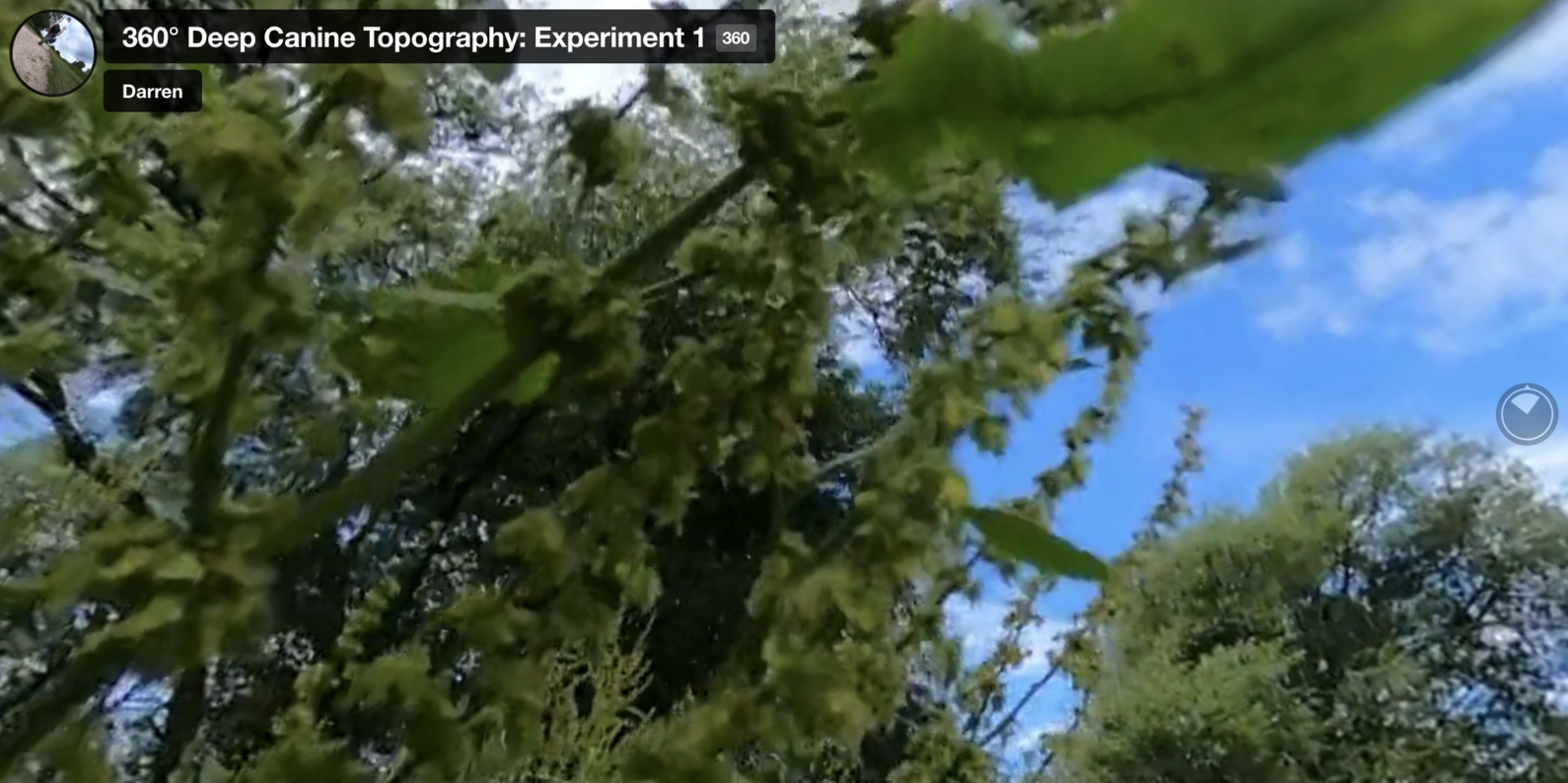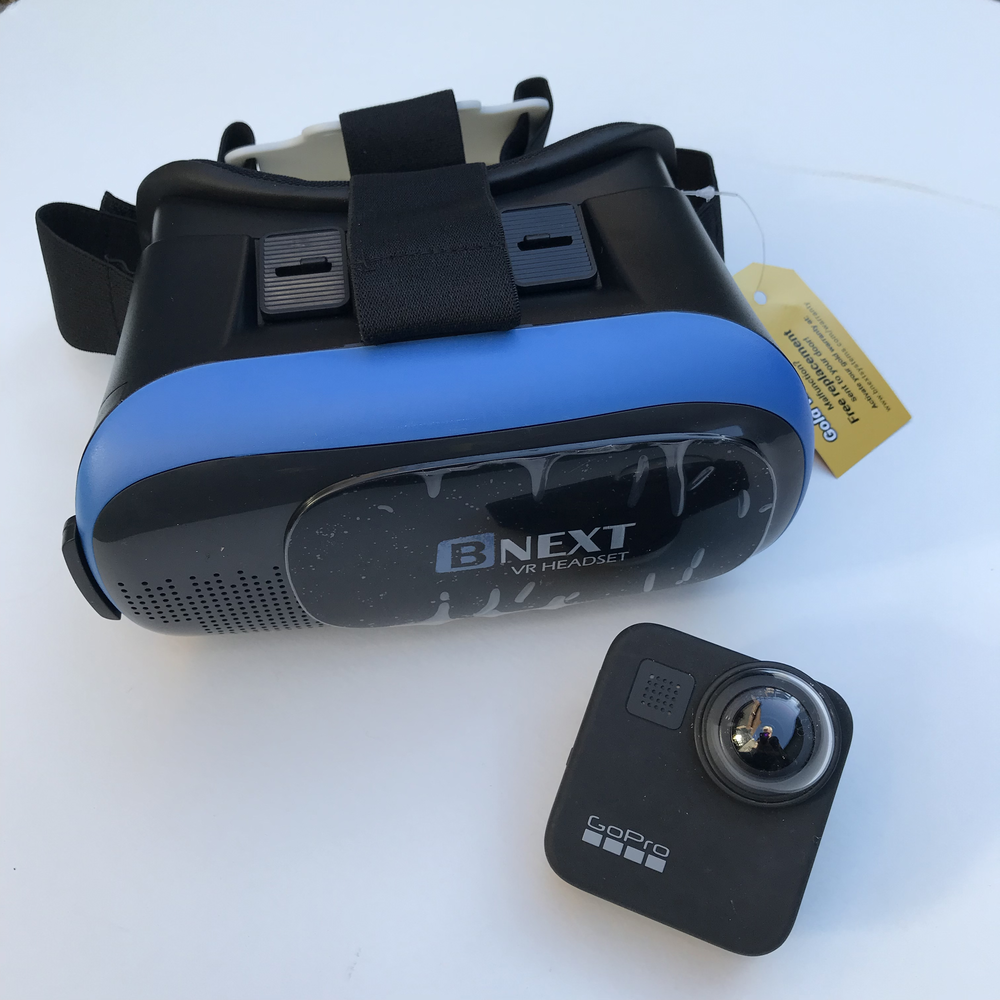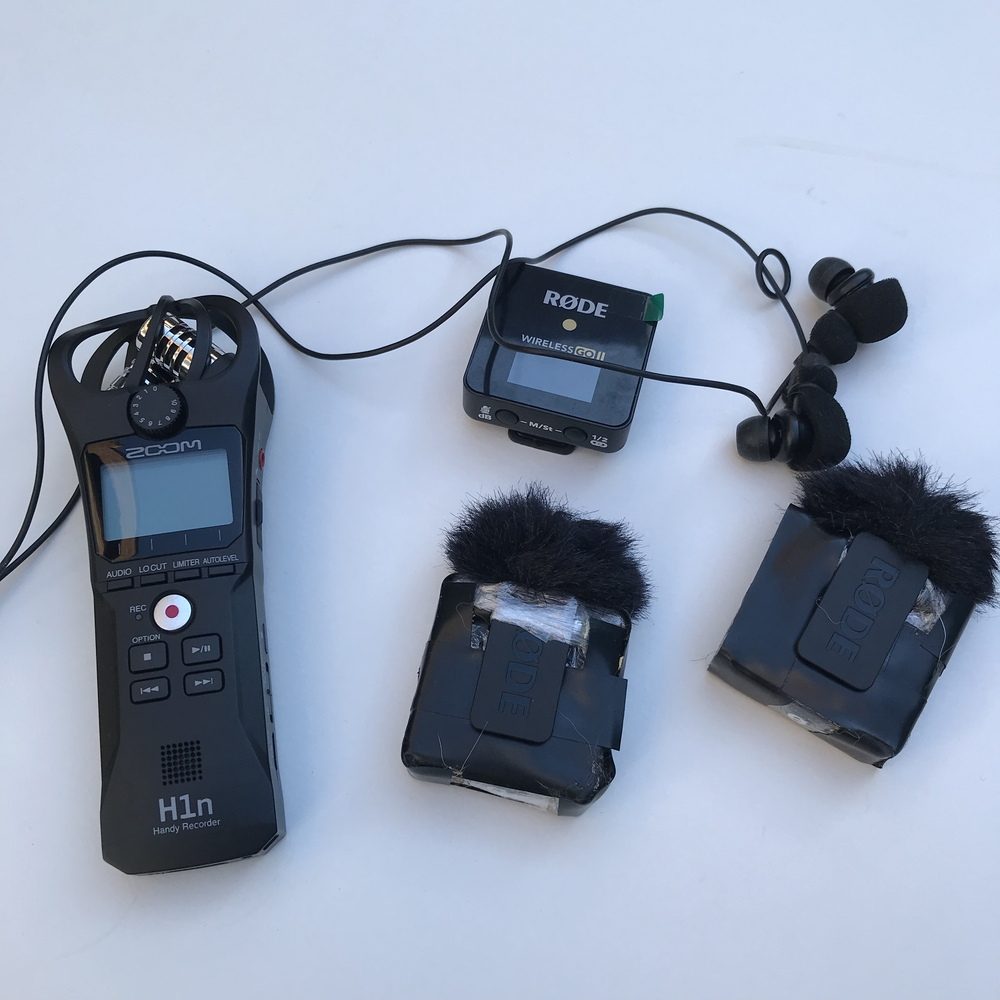360° Camera and VR Experiments:
Methodology:
In this experiment I have employed 360° cameras to enable an immersive encounter with the canine view of the world. Cameras are placed either on the back or chest of my canine collaborator, as we explore familiar landscapes, as part of a wider investigation into human-canine psychogeography.
Both films take us to a local edge-land nature reserve, a regular location for our walking practice. In the first film the camera is mounted on the back, allowing for a 360° view as close to the canine POV as possible. In the second film the camera is mounted on the chest of the canine, allowing an interesting view of the ground, the four legs in action and brings us closer to the more olfactory world of the canine sensorium.
Both films can be viewed using a virtual reality headset, either connected directly to a computer or via the use of a mobile phone and suitable mobile headset, using the Vimeo mobile application.
Equipment:
- Chest or back mounted 360° action camera, GoPro Max.
- VR Headset, Bnext 3D VR Glasses, any compatible.
- Mobile phone, iPhone 7 or any compatible.
- Vimeo mobile application.
Discoveries:
Weather viewed on a screen, using the mouse to navigate the 360° view, or as a virtual reality experience, the result is both marmorizing and disorientating. Although you have control over your chosen view, withing a 360° rotation, you have no control over the movement of the canine body, as it moves you through the landscape. The ability look around, and experience the short filmic adventures offers some really interesting alternative views of the landscape as it unfolds. The result is both an unsettling of the normal human visual field, but in a way which enables an ocular human-canine hybridity.
360° Film Link The Meadows - Back Momounted camera:
Opens in a new Vimeo window:
Play Ball:
The sound-file (which should play automatically) is an experiment in merging both human and canine soundscapes as a live event. Here, human sound is recorded through in ear binaural microphones, and canine sound by wireless clip-on microphones, recorded through a hand-held zoom recorder. This soundscape follows my companion chasing and routing out a squeaky tennis ball before taking a dip and a drink in a nearby ditch.
360° Film Link The Meadows - Chest mounted camera:
Opens in a new YouTube window:
Augmented, real-time super-sonic, human-canine soundscapes:
Methodology:
Wireless microphones are placed on the body of the canine, one on each side, as close to the head as possible. In our case these were clipped onto the side straps of a walking harness, just behind the ears of the canine.
Microphones are connected to a receiver, which has a range of up to 200 meters, which in turn is connected to a small digital field sound recorder (either a Zoom or Olympus device).
Using a splitter, binaural microphones, which also act as headphones, are worn by the human participant (s). The resulting input, when attached to the field recorder, enables both the sound from the canine body and the sound of the human sonic experience to be merged.
Equipment:
- Rode Wireless Go II, Microphones and Receiver.
- Roland in-ear, binaural microphones.
- Standard headphones.
- Zoom N1n Field recorder.
Discoveries:
The merging of the human- canine sonic landscape (super-sonic-soundscape) acts to trouble the olfactory, bipedal, horizon focus of the human senses, thus creating a hybridity or sonic synaesthesia. At first, this is a little disconcerting, but your ears soon become tuned into the canine body and his/her movements through the landscape at a much more visceral and connected level.
These initial experiments in 360° camera and augmented soundscapes raise a number of questions regarding the role of technology in enabling human-canine sensory hybridity, as part of a wider PhD research project into multi-species artistic walking practice. My hope is that by employing such techniques, I can further develop deep canine topography, as a methodology beyond the scope of my current PhD. More experiments are needed to prefect the techniques, but potentially the same methods could be employed to enable a more relational encounter with landscape as a human-canine collaboration.
The full PhD research can be explored by clicking on the circular MAP link:


